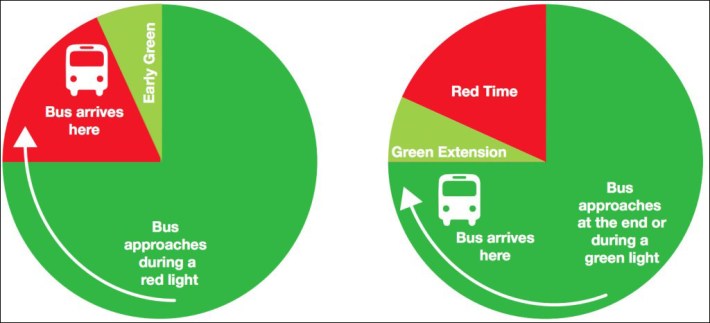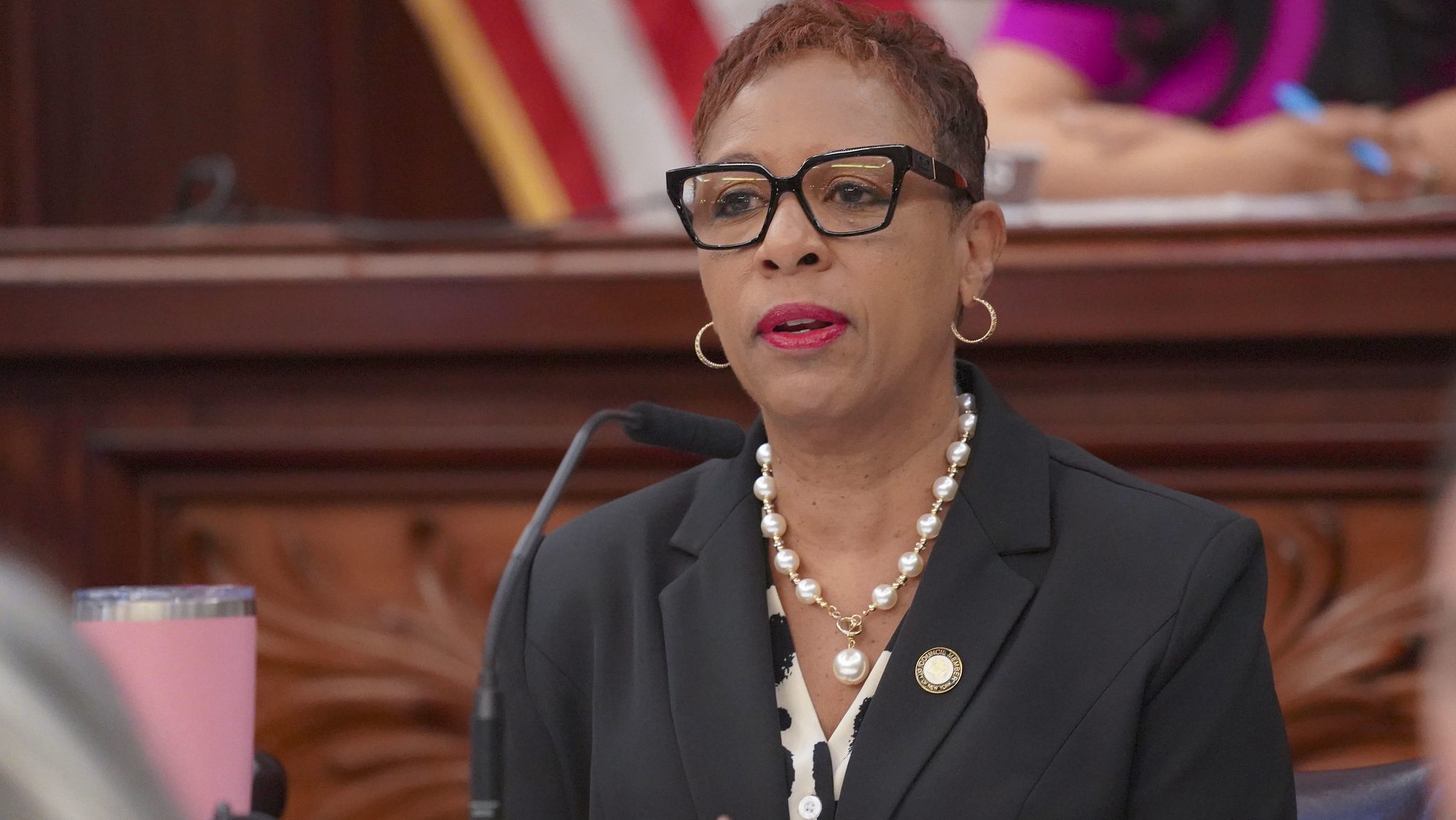New York City buses are getting an extra shove across the finish line — er, intersection.
The city's Fiscal Year 2020 budget allots $2.66 million annually through 2023 to upgrade 300 intersections per year with transit signal priority — a technology that holds green lights and shortens red lights for approaching buses.
It's a major win for transit advocates, who had previously admonished the city for the slow pace with which it rolled out the technology, known as TSP among transportation insiders. Mayor de Blasio teased the accelerated rollout in his State of the City speech in January.
“It’s good to the see that the DOT is admitting that they can accelerate the installation of this technology," said Ben Fried, communications director at TransitCenter.
City buses spend approximately 20 percent of their time stopped at red lights, according to DOT. The signal priority system can shave that down by holding green lights for approaching buses and shortening red lights where buses are stopped

MTA buses have been universally equipped with the technology necessary to communicate with traffic signals since 2017. Despite that, last year DOT Commissioner Polly Trottenberg insisted to city council members that the tech was more complicated than "just flicking a switch."
The agency had balked at Council Member Mark Levine's bill to require TSP installation on 10 additional routes per year. That proposal had the support of a majority of city council members.
“We understand we need to pick up the pace, but I do want to stress we also want to make sure that we get the engineering right, so that we really actually maximize the improvements in bus reliability and travel times," Trottenberg said at the time. “We want to see how we can work smarter.”
The city's change of course demonstrates a willingness to break conventions and innovate, according to TransitCenter. The city has installed TSP at 600 intersections, but previously planned to reach just 1,000 by the end of 2020.
"It goes to show that they can create rules of thumb to speed up the implementation of this," Fried said. "Bus riders are going to benefit from this in tangible ways."






